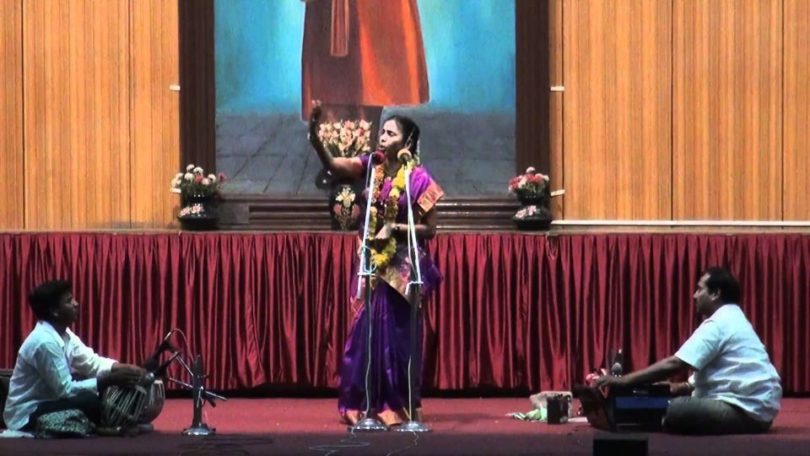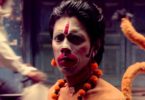Since ancient times stories have defined and shaped the cultures and traditions of the lands. The art of storytelling is ancient as the earliest of the civilizations. Storytelling started as paintings on the walls of caves. Later, when language came into existence, oral traditions of storytelling narrated crude forms of human evolution. As civilization progressed with the transition of different eras, storytelling evolved into various refined forms such as art, music, drama and dance.
India is a unique country that enjoys the diversity of cultures, traditions, regional histories, languages, lifestyles, food and clothing. These variations have given rise to traditional folklore and myths that have become popular over the ages in their respective lands. These have been kept alive and rich through various forms of storytelling, each one unique to a specific region.
Stories from the South
The great epics and puranas have always had a great importance in reflecting the true heritage of our country. Stories from these great epics and ancient scriptures have been translated, adapted and recreated across the country to suit the local culture and also enable the people to understand them better.
South India is home to different forms of storytelling, rendered in different forms of performing arts. The stories are sung, narrated or performed as dance or dramas. Harikatha or the ‘story of Lord Hari’ is one of the oldest and popular forms of storytelling.
The Harikatha
Harikatha or literally ‘the story of Lord Hari (Vishnu) is also known as Katha kaalakshepa, which means spending time with the story. In ancient times, Harikatha was performed by a narrator also known as Bhagavatar or Haridasaru in the premises of temples and other holy places. On special events such as festivals or birthdays of holy men, the katha or story would be based on the importance of the festival or the lives of those great men.
An act of Harikatha involves the narration of a main story alongside recounting the sub-plots that connect the story. The entire act is a one-person performance consisting of storytelling, poetry, dance and expressions, assisted by musicians in the background. The entire narration is accentuated by songs that relate to the plot and anecdotes that uplift the essence of the plot.
The main idea of Harikatha is to impart the rich values of culture, tradition and religion amongst the masses and help them to open their minds towards truth and righteousness. The knowledge about knowing oneself was also of prime importance and this medium of storytelling was an attempt to reflect the actions and consequences of our lives by narrating the incidents of the historical or mythological pasts.
Harikatha across the states
Karnataka
Harikatha is also known as Keerthane, Katha Keerthane or Katha Kaalakshepa in different parts of Karnataka. The art of Harikatha was majorly influenced by Bhajan traditions from different parts in and around the state. Harikatha traces its roots from the popular Dasa Saahitya of Karnataka from 14th century. Later, influence also came in the form of the Marathi Keerthan tradition that was prevalent in the state during the 19th century.
Bhadragiri Achyuta Dasa, Bhadragiri Kesava Dasa, Konanuru Srikanta Sastri, Gururajulu Naidu, L Lakshmipati and Tumkur Venugopala Dasa are some of the most notable veterans of Harikatha in Karnataka.
Tamil Nadu
Tanjavur Krishna Bhagavatar is considered to be the forefather of Tamil Harikatha.
One of the popular styles of storytelling in Tamil Nadu is known as Villupattu which translates into ‘the song of the bow’. The narrator/performers in the villages were known as Pulavar (meaning poet in Tamil). The performance involves narration of the plot accompanied by the performer striking the bow. Numerous small bells are attached to the bow string and the bow is mounted over an earthen pot placed facing downwards.
The performer is accompanied by a co-singer who mimics an active listener, interrupting the narration through appropriate exclamations, like ‘yes yes’ or ‘is it so?’ This makes the whole act interesting, capturing the attention of the audience throughout. The stories are usually sung in praise of the heroic acts of the heroes of the native history.

Villu Pattu. Image Courtsey: http://tamilinarumai.blogspot.in/2012/02/blog-post.html
Andhra Pradesh
The origin of the Telugu Harikatha is much similar to that of Karnataka in the fact that both branched from the roots of Bhajan tradition. Another form that Harikatha assumes, and which is equally popular in Andhra Pradesh, is Purana Pravachana or the recounting of tales from mythology.
Ajjada Adibhatla Narayana Das is very similar to his Tamil counterpart who played a major role in enriching the tradition of Harikatha in the state.
The Bhajan heritage predominant during the 14th and 15th century influenced the rise and popularity of this art in Andhra Pradesh and the neighboring states of Karnataka and Tamil Nadu. Various metrical forms of poetry in Telugu are used to accentuate the narration to make it more effective and lively.
Epilogue
There is absolutely no doubt that even to this day, this ancient form of storytelling is popular and is gaining a lot of importance, particularly in the rural regions. Harikatha is not just a medium to entertain the masses through the narration of stories from history and mythology. It is also an effective way to impart learning and transmission of ideas and ideals from the ancient scripts and great epics.
Technological advancements may have made us cling to the modern mediums of information, but storytelling traditions ensure that information does not stop at one generation, instead the stories stay alive generation after generation.






Thank you, Madhu, for compiling the tradition of Harikatha from different states. I can’t vouch for this, but I read somewhere that Harikatha went from Maharashtra to Tamil Nadu, thanks to the patronage of Maratha rulers who briefly ruled Thanjavur. Congratulations.
Shyam Kumar, Mumbai